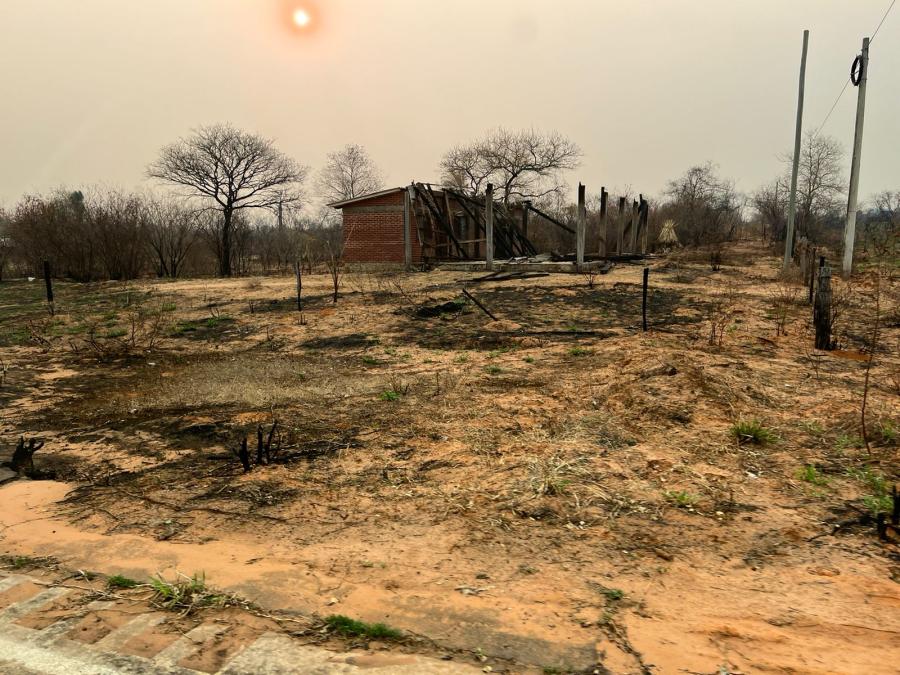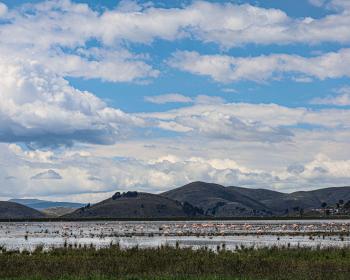Leónida Zurita Vargas is president of the women’s branch of the Federación del Trópico de Cochabamba (FTC, Federation of the Cochabamba Tropics) and the Six Federations of the Tropics of Cochabamba, the campesino organizations that represent coca growers and others in the tropical Chapare region of Bolivia. She is also president of the Bartolina Sisa National Campesino Women’s Movement. The Chapare is a tropical area north of the Bolivian city of Cochabamba, which has become the principal target of U.S.-backed coca eradication efforts in Bolivia that have labeled the coca grown here "illegal" and by extension its defenders "criminals." Coca eradication efforts are carried out by U.S. Drug Enforcement Administration and military advisers working with the Bolivian anti-drug forces (UMOPAR) and specially trained mercenary-type units that, until July 2002, were under the direct control of the United States.[1]
The organizations that Zurita represents have been targeted by Bolivian military actions and often accused of supporting drug trafficking. The coca growers deny these charges. Confrontations between coca growers and the Bolivian military during the past few years have often led to scores of dead and wounded--mostly poor peasants. Two of Zurita’s co-leaders were victims in late 2001. Though unarmed, they were shot dead in the offices of the FTC by members of the Expeditionary Task Force, a U.S.-created and controlled military unit many Bolivians call mercenary. Massive national blockades involving the coca-growers, at times unified with other peasant and indigenous sectors, have rocked the political foundations of the country. Sporadic violence continues between coca-growers defending their fields and Bolivian troops ordered to cut or uproot coca.
While the principal economic activity in the Chapare involves coca production, Zurita points out that coca is not the only base of subsistence in these regions. They also produce pineapple, bananas, and other tropical products. Nonetheless, the market prospects for coca, a hardy and productive crop, are much more viable than these other goods, which are perishable and hard to transport to urban centers. Another historically traditional coca-growing region known as the Yungas, closer to La Paz, has escaped some of the violence because a portion of its production has been declared legal for the Bolivian national market. Nonetheless, eradication efforts and conflicts appear to be on the verge of spreading to the Yungas area as well.
The identity of the coca growers is a point of continuous debate in Bolivia. Most of the coca growers are Andean Quechua and Aymara whose families migrated to the region from the mining areas of Oruro and Potosí. These families were the principal victims of the privatization of the mines and free-market structural-adjustment programs in the late 1980s. When the international tin market collapsed and the Bolivian government closed a number of state-owned mines, these poor indigenous workers’ only alternative for survival was to migrate to the tropics. The subsequent rise in coca growing--responding both to a national market for ritual and social consumption and to the international market for drug production--was one means of survival for these newly resettled indigenous communities. Because of their long history of involvement in highly organized miners unions--the most resistant political sectors in Bolivian history--these migrant families have maintained a solid and unified political stance to defend themselves against the Bolivian state. In the opinions of many of the Bolivian non-indigenous elite, these migrants are merely militant peasants, even criminals, with no claim to a "true" indigenous identity. Conservative forces in the government suggest that migrants have no right to be in the region, as they are not truly indigenous like certain lowland peoples (the Yurakare, the Tsimane’, and others) who have lived in the Bolivian tropics since long before the coca boom. Nevertheless, the coca growers are often excoriated in the urban press for being unruly indios (Indians), a racially derogatory way of labeling all of Bolivia’s poor as "indigenous." By turning this prejudice into a political tool, the coca growers reassert the fact that most of their communities are Aymara and Quechua in their ethno-linguistic identity and heritage. Quechua-language radio stations have been one key tool of mobilization--and a target of the army--in the Chapare. As Zurita points out, despite how others wish to identify their movement, the coca growers identify themselves as brothers and sisters of a wider indigenous struggle.
The coca-growers’ movement in Bolivia has become a central political force in the country. Evo Morales, leader of the Movement to Socialism (MAS), recently came in second place in Bolivia’s presidential elections. His political support came not only from coca growers, but also from most of the Quechua and Aymara peoples in the Andean highlands, as well as other progressive political sectors opposed to the so-called neoliberal program of the main political parties. As Aymara intellectual María Eugenia Choque said: "[Morales’ electoral success] is the product of 500 years of resentment and anger by indigenous peoples who have been unable to participate in politics. . . . It’s not just about coca, it is a generalized anger of the indigenous peoples of the country." The MAS party now occupies more than 30 seats in the Bolivian Congress. This remarkable political event has put indigenous and peasant leaders into seats usually reserved for the Bolivian elite. The Quechua, Aymara, and Guarani languages can now be heard in the Bolivian legislative chambers.
1. See The Washington Post, June 23, 2002.
Bret Gustafson (bdgustaf@artsci.wustl.edu) is an assistant professor of anthropology at Washington University in St. Louis.


